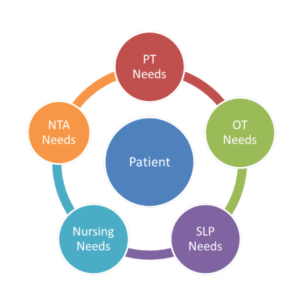LTC transitions of care: Get collaborative or play catch-up, says national TOC group
Many separate initiatives are already taking place within acute care and within long-term care (LTC) to establish new on-site protocols and retrain staff to improve transitions of care (TOC)—including better patient tracking and care documentation before, during and after transitions. Finding ways to put these efforts together was the focus of the National Transitions of Care Coalition (NTOCC) Midwest Region Summit held in Cleveland earlier this month.
NTOCC’s Midwest Region includes leading hospital and health systems like the University of Michigan Health System (Ann Arbor), Henry Ford Health System (Detroit), Cleveland Clinic, MetroHealth (Cleveland) and University Hospitals (Cleveland), some of whom have already formed contract-based or partnership-based relationships with long-term care facilities in their areas.
Improving TOC will require acute care and long-term care to break out of long-standing siloes and take part in cooperative efforts on a local level, noted NTOCC’s Executive Director Cheri Lattimer, RN, BSN. “We can put all the systems and processes in place, but the hardest thing will be for us to change our culture.”
In most cases, the acute-care environment is ahead of LTC in this respect, since most hospitals have had some sort of electronic medical record (EMR) system in place for years and because acute care is currently the central focus of the Centers for Medicare & Medicaid Services’ initiative to reduce rehospitalizations. But caregivers recognize that solving the issue of hospital readmissions is more than an issue of better documentation and accountability—it’s an issue of better communication between acute care and LTC on all levels.
Robust conversations on a local level between acute care facilities and LTC can foster learning toward a shared goal. “People shouldn’t have to re-invent the wheel. Plenty of work has already been done,” Lattimer told attendees. “We have to break the siloes down.”
Acute care facilities are grappling with problems of keeping track of their patients after discharge—including issues with misinterpreted post-discharge care plans, poor medication compliance, and getting patients to complete follow-up lab tests–all while keeping the new penalties for readmissions in mind. Meanwhile, LTC communities are seeking new service-line models, branching into day-care services, hospice, rehabilitation therapy, home-care services and others—some of which involve additional transitions of care documentation that are beyond their current abilities to capture and exchange care data electronically with other care partners or even between facilities within their own organizations.
Much improvement can be gained within LTC itself, especially when it comes to transferring residents from skilled nursing care to hospice, noted Joan Hanson, a director at Hospice of the Western Reserve Reserve (Cleveland). Her organization is six months into a new “medical and social” program called Western Reserve Navigator that uses around-the-clock advanced practice nurses, palliative medicine staff and social workers to coordinate discharges from local nursing homes to the hospice setting. “Hospice is a six-month Medicare benefit, but we found that many hospice patients are only there for about eight days,” she said. “Better transitions of care can allow hospices to have early intervention and prevent costly readmissions.”
Among NTOCC’s valuable resources is the Transitions of Care Compendium, web-based collection of leadership experiences, guides and hundreds of articles on how to approach and enact best-practice TOC strategies.
Another new tool, the TOC Evaluation Software, is designed to evaluate the transitions of care and provide metrics on how to improve. The application, developed by H. Edward Davidson, PharmD, MPH, of Insight Therapeutics, LLC, is free and is available on the NTOCC site.
NTOCC hopes to inform national policy and serve as a national resource for tools enabling heath reform begun under the Affordable Care Act. No one is sure who ultimately will measure TOC performance goals, but NCQA (which is already working on accountable care standards) will most likely be involved and the Center for Medicare & Medicaid Innovation (CMMI) will proably play a role as well, Lattimer said.
The changing landscape of care transitions goes beyond the discharge summaries and into medical and nursing education as a whole, explained Alice Stollenwerk Petrulis, MD, medical director for care management at Ohio’s MetroHealth System. From primary care offices to emergency rooms, long-term care facilities and rehab, physicians and nurses need to be trained to deliver care in the new service models. “We train people to take care of patients in a hospital,” she said. “But that’s not where it’s at anymore.”
As more hospitals and LTC organizations move toward solving the issues of transitions of care, it’s crucial to erase the concept of departmentalized care and to adopt collaborative approaches between LTC and hospitals. “No more sacred cows,” NTOCC’s Lattimer insisted. “You can lead, or you can catch up.”

Pamela Tabar was editor-in-chief of I Advance Senior Care from 2013-2018. She has worked as a writer and editor for healthcare business media since 1998, including as News Editor of Healthcare Informatics. She has a master’s degree in journalism from Kent State University and a master’s degree in English from the University of York, England.
Related Articles
Topics: Accountable Care Organizations (ACOs) , Advocacy , Articles , Medicare/Medicaid , Regulatory Compliance










